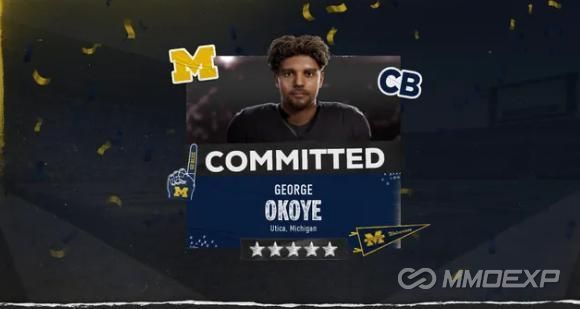College Football 25 recruiting is the highlight of the game this year. Because players are limited to a four-year stay, maintaining a strong roster in your College Football 25 dynasty demands constant evolution. The key to success lies in effectively attracting high school stars. This guide provides an in-depth look at both the basics and the finer details of recruiting in College Football 25.

College Football 25 Recruiting Basics
EA Sports designed the high school recruitment model in Dynasty Mode around three core pillars. Understanding these from the outset will help you recruit top prospects more effectively:
Unique Needs and Motivations: Each recruit has specific needs and motivations that you must discover through individual interactions.
Regional Differentiation: Talent varies by region, reflecting real-world data on player caliber, quality, and type.
Resource Allocation: Top schools can recruit nationwide, while smaller schools need a more targeted approach.
Setting Up Your College Football 25 Recruiting Board
At the start of each season, you'll begin populating your recruiting board. With over 3,500 players to choose from, initial groundwork is crucial. Keep a pen and paper handy for notes!
Five-Star Prospects with a 5 Pipeline Rating: These should be your top priority, especially in key positions. Some may commit as soon as you offer a scholarship.
Four-Star Prospects with a 5 Pipeline Rating: Next, focus on these, followed by five-star prospects with a 4 pipeline rating.
Three-Star Prospects with a 5 Pipeline Rating: Continue down this line based on the combination of star ratings and pipeline ratings.
You'll develop personal preferences over time, such as height and weight, but this approach is an excellent starting point. You can have up to 35 players on your board. As the season progresses, note each prospect's three key motivations, identifying any Deal Breakers. Align recruits with your program's strengths and remove those whose needs you can't meet.
Managing College Football 25 Recruiting Hours
Once the season begins, allocate hours to win over recruits. Prospects gradually narrow their choices from Open to Top 8, Top 5, Top 3, and finally Commitment. Your goal is to remain above their cut-off line each week.
Recruiting hours depend on your team's prestige:
Five-Star College: Starts with 1,000 hours.
One-Star School: Starts with 350 hours.
You can only spend 50 hours on a single prospect unless you have the "Always Be Crootin" ability, which allows 70 hours for specific positions.
Here's what you can do with those 50 hours per prospect:
Scout: 10 hours (usually takes three sessions to fully scout one player)
Offer Scholarship: 5 hours
Search Social Media: 5 hours
DM The Player: 10 hours
Contact Friends and Family: 25 hours
Send The House: 50 hours
Soft Sell: 20 hours (available when a recruit has chosen top five schools)
Hard Sell: 40 hours (available when a recruit has chosen top five schools)
Sway: 30 hours (available when a recruit has chosen top five schools)
Schedule Visit: 40 hours (more on this below)
Understanding College Football 25 School Grades
Your school's grades are crucial in attracting recruits. There are 14 grades, most of which can improve or worsen as you progress, making results essential. Match your strengths with recruits' needs using color-coded symbols (green is good, red is a no-go):
Playing Time: Time to become a starter.
Playing Style: Representation of your play style.
Championship Contender: Proximity to winning a championship.
Program Tradition: Historic success.
Campus Lifestyle: Rating of the campus area (cannot be changed).
Stadium Atmosphere: Based on home wins.
Pro Potential: Likelihood of making it to the NFL.
Brand Exposure: Overall brand recognition.
Academic Prestige: Academic quality (cannot be changed).
Conference Prestige: Strength of the conference.
Coach Prestige: Quality of coaching staff.
Coach Stability: Longevity and job security of coaching staff.
Athletic Facilities: Quality of athletic facilities.
Proximity to Home: Location relative to the recruit's home pipeline.
Scheduling Visits and Securing Prospects
As the season progresses, use the Schedule Visit option to secure top targets. This costs 40 hours from your overall allocation but doesn't count against the 50 individual hours. It's available once a prospect has finalized their top five and received a scholarship offer from your school.
You can host up to four prospects per visit, available only for home games or bye weeks. Choose from 14 activities, aligning with prospects' interests and your strengths. Consider position compatibility to avoid direct competition among recruits, and aim to win the game to leave a positive impression.
Once prospects have verbally committed, maintain your promises until signing day. For instance, if "Championship Contender" is a Deal Breaker and you lose multiple games, you risk losing the recruit. Hopefully, this won't happen, and once signing day is over, you can celebrate your new additions before the process starts again for the next season.
With this comprehensive guide and the strategic use of College Football 25 Coins, you are well-equipped to dominate the recruiting landscape and build a dynasty that stands the test of time. Enjoy the process and celebrate your victories as you watch your team evolve season after season.
MMOexp College Football 25 Team